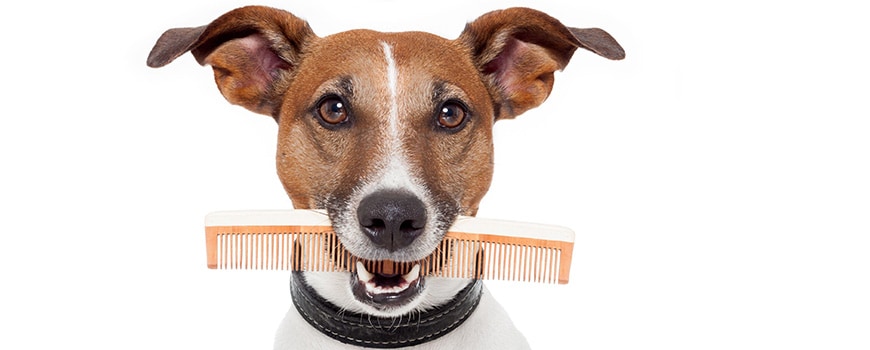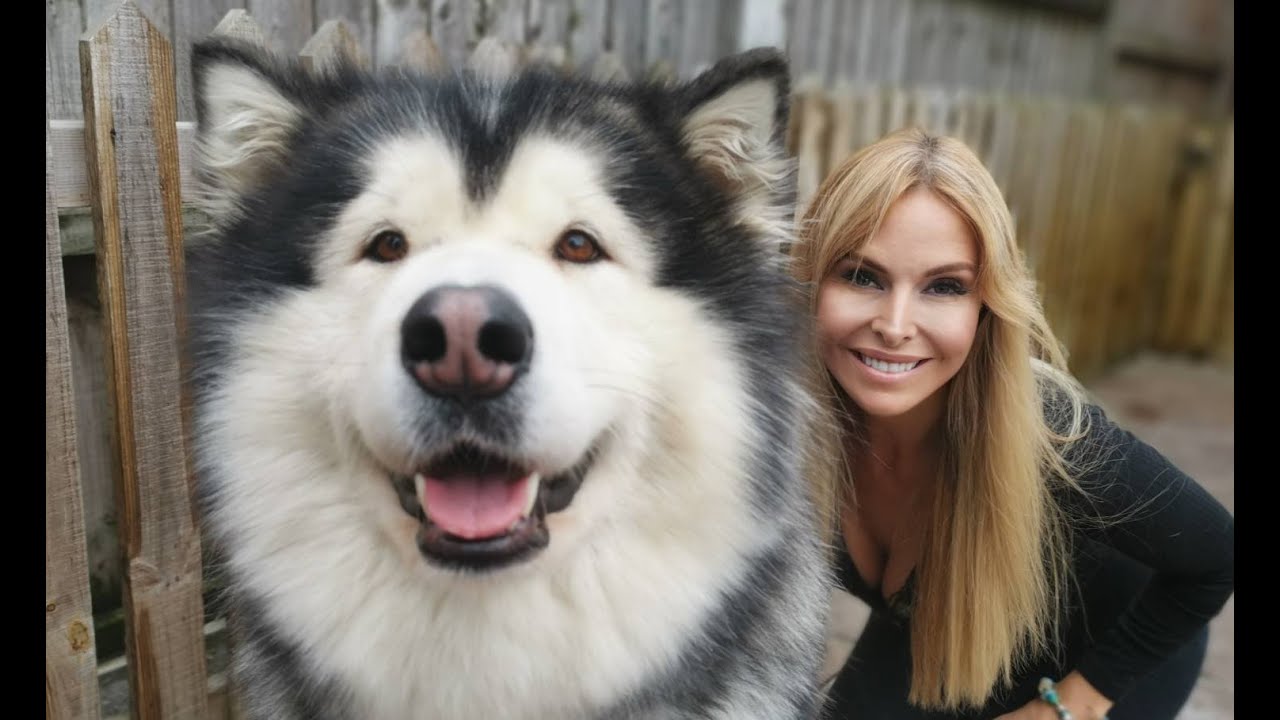There’s a few things that has to be taken in consideration, before deciding if you should get an Alaskan Malamute, or instead you should go for a different breed.
Living with a Malamute is dramatically different from living with most other breeds of dog, so before you take that plunge and decide to buy a Malamute, evaluate your Malamute-ownership resume from the dog’s point of view.
Where do You Live?
Yes, the ideal domicile for a Malamute is a house with a large properly fenced (six-foot minimum) yard, but this is not to say that the dog must be simply banished to life outdoors never to set foot in the house. Inherent in this breed’s love of people is the need to share its people’s lives fully.
Malamutes do enjoy and require ample time outdoors, but they also relish the opportunity to spend the evening by the fire in the company of family.
The Malamute can reside in a more cramped dwelling, even one without large acreage surrounding it, but only if she is offered a great deal of exercise and mental stimulation every single day—a requirement true of any Malamute in any living situation.
What is Your Dog Experience?
If they had their “druthers”, Malamute rescuers and reputable breeders would prefer that only those with experience with dogs—especially experience with large, headstrong dogs—take the step into the adventure that is the Alaskan Malamute. Newcomers can succeed, but they must be willing to do their homework and find mentors who can help them along.
What Are Your Expectations?
Befo re you even begin contemplating the prospect of living with a Malamute, you must honestly evaluate the reality of living with a savvy, strong-willed dog that can ultimately weigh as much as 100, 110, even 120 pounds (45.4, 49.9, 54 kg).
re you even begin contemplating the prospect of living with a Malamute, you must honestly evaluate the reality of living with a savvy, strong-willed dog that can ultimately weigh as much as 100, 110, even 120 pounds (45.4, 49.9, 54 kg).
Do you have the time, inclination, and physical and temperamental ability required to mold the behavior of so complex, even dominant, an animal in positive directions? Do you truly want a dog that demands to be an integral part of every project, every activity?
Are you active enough for a partnership with an Alaskan Malamute? This isn’t an exercise machine you purchase with grand resolutions to “get in shape,” only to cast it away in a corner once the novelty and your commitment wane.
Pay attention to more practical concerns, as well:
- Will a full-grown Malamute fit in your car?
- Are there other pets in the household that may inspire predatory impulses in this dog?
- Do you mind having hair all over the furniture, in the carpet, on your clothes and in your food? If so, perhaps a Nordic dog of any breed is not appropriate for your household.
What About the Rest of the Family?
If there are children in the family, that will certainly please the resident Malamute, but the kids and the dog must be monitored to prevent any unforeseen mishaps that can occur between a young child and a very large dog. As for the young Malamute, everyone must be warned that she will not remain the roly-poly teddy-bear-like puppy for long.
Are all in the family willing to commit to this soon-to-be-large and potentially domineering dog’s training and socialization, to practice consistency, and to refuse to allow the pup to engage in behaviors that will be forbidden once the dog is grown?
Can You Afford a Malamute?
The proper care of any dog can be costly, what with veterinary care, kenneling, equipment, food, etc., but an Alaskan Malamute, for obvious reasons, is particularly costly to feed, house, board, and transport. Another expense associated with Malamute keeping is that of the time involved.
In addition to the time required for daily exercise and activity, you may need to divide your dog’s daily food rations into two or three small meals a day to keep the dog more comfortable and to prevent the deadly condition of canine bloat.
Also time consuming can be the grooming of the Alaskan Malamute, which requires regular and very thorough brushing, especially when the coat is shedding.
Can You Offer a Lifetime Commitment?
You don’t have to be born with a natural sensitivity to and understanding of the nuances of Malamute communication, but the successful human partner of this dog will exhibit a genuine desire to master these skills. You must commit not only to the dog, but to your own patience and sensitivity.
Work with a trainer who understands the unique Malamute character, and who respects the breed’s intelligence and the fascinating ways in which her mind works.
In reviewing your qualifications as a prospective Malamute owner, ask yourself and your family the proper questions and be honest with the answers. Assure yourself and your family that your desire for this breed runs far deeper than simply wishing for a beautiful dog that many will mistake for a wolf.
Success is greatest for those who feel a true kinship with this animal and see that as their motivation for living with one.
General Appearance
The Malamute should present a strong, dignified, powerful picture of a dog with a deep chest, a straight back, and a lushly furred curled tail that the dog carries proudly over her back.
Engineered for pulling sleds and sledges over treacherous terrain, the Malamute’s legs should be large boned and well muscled, coupled with equally large feet with thick pads insulated by a dense growth of hair. Atop her wide, thickly muzzled head, her erect, wedge-shaped ears remain alert to the most subtle of sounds.
The dog’s noble, often serenely intelligent gaze emanates from almond-shaped eyes, which should be brown (blue eyes, acceptable in Siberian Huskies, are a disqualifying fault in Malamutes).
Size
While Malamutes are found in a range of sizes, the average male, as reflected in the standard, stands about 25 inches (63.5 cm) at the shoulder and weighs in at approximately 85 pounds (38.6 kg); the female is slightly smaller, standing approximately 23 inches (58 cm) at the shoulder and weighing in at 75 pounds (34 kg).
Many Malamutes are much larger than this, however, and, assuming they are physically proportioned and sport the correct movement and structure, the larger dogs are rarely penalized in the show ring. There is danger, however, in modern trends that encourage the breeding of giant Malamutes—dogs that can reach as much as 150 pounds (68 kg).
Such excess size and weight can stress the dog’s muscles and bones, and theories suggest that they may stress the heart, as well.
Color
The typical Malamute is usually gray in color, ranging from a very light gray to black, with white undersides, although pure white and a rare red variation with lighter eyes is also acceptable.
The dog’s coat color is usually complemented by either a mask of color across the dog’s white face or a cap of color at the top of her head, markings that, despite all-around similarities in color, differentiate this dog clearly from a wolf.
Coat
Like all members of the Nordic family of dogs, the Malamute sports a thick double coat, consisting of a soft, woolly undercoat that acts as an insulator, combined with a longer, rather coarse coat of guard hairs that stand out from the dog’s body.
This ingenious system protects the dog in those legendary sub-zero temperatures of her homeland, yet with ample shade and constant access to fresh cool water, today’s pet Malamute should fare well in warmer climes, as well. When temperatures are extreme, such as 100°F (37.8°C) and above, the dog should be kept indoors during the day and exercised only when the heat subsides.
Her owner should also resist the temptation to shave the coat. Veteran owners cringe at the thought, knowing that Malamutes do not adjust well emotionally to the removal of one of their primary physical characteristics.
Temperament
The standard addresses the Malamute’s temperament as well. In keeping with the dog’s ancient past, today’s Malamute is described in her breed standard as loyal, affectionate, friendly, dignified, and devoted. With this standard guiding its breeding, it is little wonder that the well-bred Malamute commands such enthusiasm from her human companions.

